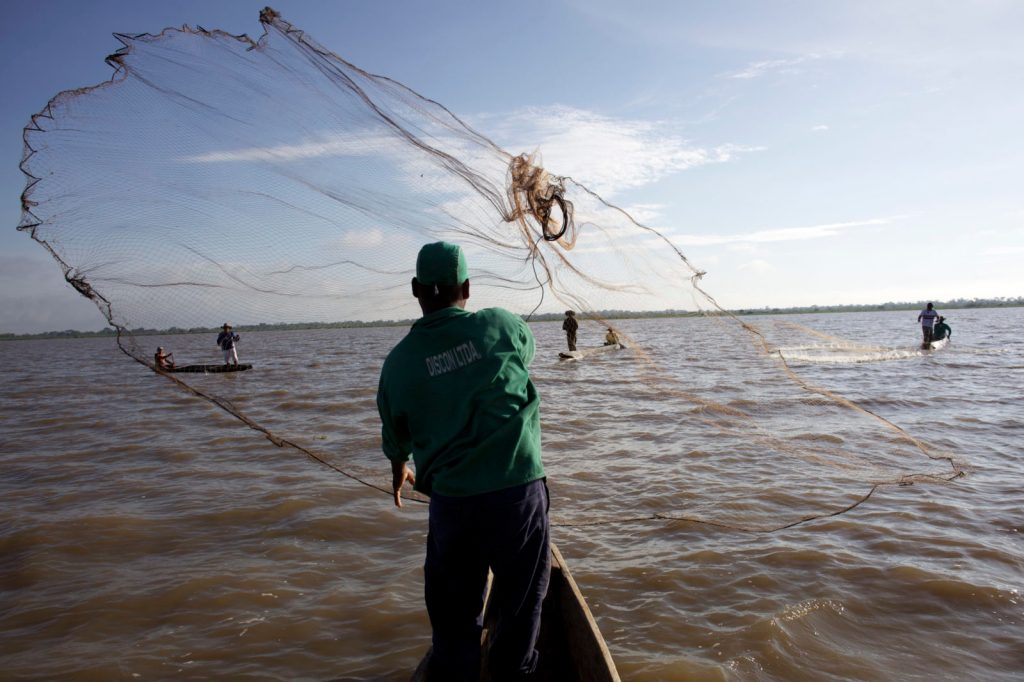For durable conservation success, the number and sizes of protected areas matter but, as biodiversity continues to decline globally, it is the outcomes within those areas that are most important. This year, as countries negotiate new agreements under the U.N. Conventions on biodiversity and climate, scientists argue in Nature that sustaining global biodiversity into the future requires broadening the area-based conservation toolkit beyond protected areas.
The Gist
The authors, including scientists from TNC, World Wildlife Fund, Wildlife Conservation Society and numerous universities, emphasize Other Effective Conservation Measures (OECMs) as a policy tool for complementing protected areas while also advancing biodiversity conservation that is both equitable and effective.
An OECM is “a geographically defined area other than a Protected Area, which is governed and managed in ways that achieve positive and sustained long-term outcomes for the in situ conservation of biodiversity.” A key distinction between OECMs and Protected Areas is that to achieve official designation, OECMs must demonstrate effective biodiversity conservation outcomes. Protected Areas have no such requirement.
Examples of managed areas that could potentially be recognized as OECMs are very diverse and include Indigenous Peoples’ territories, sacred sites, and areas managed by some industries (e.g., pastoralism, fisheries, forestry), among others.
The Big Picture
Establishing and expanding new protected areas will be an important part of the post-2020 Global Biodiversity Framework, but a focus on size-based protected areas alone – especially when there’s limited funding for ongoing management – can result in perverse outcomes. In some cases, such so-called “paper parks” can result in biodiversity loss despite legal protections that may be in place.
According to co-author and TNC scientist, Dr. Elizabeth McLeod, “In addition to effectively managed protected areas, evidence demonstrates that local communities’ management of their lands and waters also can prevent biodiversity loss and must be recognized in global conservation targets.” In the Peruvian Amazon, for example, Indigenous Peoples’ territories have been shown to be more effective than state-governed Protected Areas in preventing deforestation and degradation.
Wider recognition and use of OECMs can:
- provide new opportunities for groups to gain legally recognized use and management rights;
- reinforce local governance mechanisms that help ensure management decisions are aligned with local contexts and incorporate equitable distribution of benefits;
- facilitate the inclusion of traditional knowledge and support local leadership;
- increase the diversity of conservation approaches to support greater resilience to social and ecological changes; and,
- provide new conservation funding streams by opening up funding opportunities linked to health, development, and sustainability.
In short, OECMs can help ensure the legitimacy of global conservation targets to the diversity of actors required to turn the tide on biodiversity loss.
The Takeaway
Of course, there are caveats. One of the main concerns is that countries will use OECMs to meet conservation commitments even if they don’t actually help stop biodiversity loss. The 2019 IUCN Guidelines for Recognizing and Reporting OECMs provide clear criteria for assessments of whether managed areas meet the CBD’s definition for OECMs.
However, understanding how to demonstrate and track the effectiveness of OECMs in biodiversity conservation (including robustness to emerging threats) is nascent.
That focus on developing guidelines for demonstrating conservation effectiveness “in partnership with those already governing existing and potential OECMs,” says Jeffrey Parrish, TNC’s Global Managing Director for Protect Oceans, Lands and Water, “is where TNC’s strength as a trusted, science-based partner at all scales, from local villages to U.N. conventions, comes into sharp relief. Because of our long history of commitment to place-based work, we are uniquely positioned to help OECMs realize their potential as an important part of the future of sustained and sustainable conservation.”
One thing, says Parrish, is clear. “As countries set the agenda for environmental action over the next decade, we must keep the focus on achieving biodiversity outcomes versus simply meeting area-based targets. Numbers matter. Outcomes matter more.”




Join the Discussion